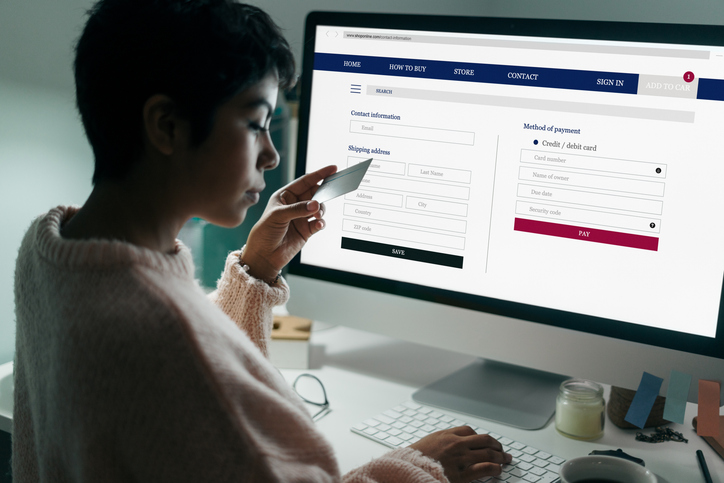By Ellie-Rose Davies, Content Executive at IMRG
A positive user experience (UX) can have a significantly help with improving key performance metrics like revenue, average order value, and conversion rates.
In this blog, we’ve gathered insights from industry experts on how to optimise UX for growth, covering:
- How to improve UX for increased conversions
- The role of returns and product experiences in enhancing UX
- How data-driven insights can help improve UX performance
Improving UX for increased conversions
A seamless user experience (UX) can be key in increasing eCommerce conversion rates and leaving a positive impression on customers that can inspire loyalty. Conversion can be improved by offering things such as clear finance options and streamlined checkout processes, as well as by having clean customer data.
Phil Alltoft, Commercial Lead at Novuna Consumer Finance reflects on the value of foregrounding choice and flexibility in UX, saying, ‘A seamless UX is valuable – especially when customers are weighing up big purchases. Offering flexible finance options at checkout, clearly signposted and easy to understand, can significantly boost conversions.
Though he warns:

‘One common mistake is hiding finance options until too late in the journey. We suggest integrating it early, on product pages and basket summaries, to support informed decisions.’
Phil also reflects on how ‘Speed, mobile responsiveness, and a frictionless checkout are also essential. Design-wise, consistent branding and intuitive layouts build trust. Ultimately, UX isn’t just about aesthetics; it’s about making shoppers feel confident, empowered, and in control.’
Barley Laing, the UK Managing Director at Melissa also speaks on how frictionless checkouts are beneficial. He comments, ‘One of the most important actions that retailers can take to ensure a speedy process to checkout online, and therefore reduce the opportunity for shopping cart abandonment while delivering a standout user experience, is using an address lookup service.’
‘Address lookup services can automatically reveal a suggested correct version of the address as the user provides theirs,’ helping to improve UX says Barley. This fixes the ‘mistakes caused by fat finger syndrome, by reducing the number of keystrokes required when typing an address by up to 81 per cent.’
Plus, having accurate address data at a global level ‘ensures communications are effectively delivered and avoids the expensive and dreaded misdeliveries and “return to sender” scenarios that can contribute to customer churn.’
Making returns and the product experience part of the UX
Making returns simple and easily accessible plus providing accurate and useful product information are core strategies to improve UX, and helps to build on customer lifetime value.
Returns
Richard van Marion,nGlobal Client Director at ReBound Returns, explains, ‘Returns are a crucial part of the user experience, and they begin well before a customer clicks ‘buy’. With two-thirds of shoppers checking returns policies before even making a purchase, this information needs to be clear and accessible from the start.’
He says, ‘Requiring shoppers to contact support just to initiate a return causes unnecessary friction. It adds pressure to both the customer and the retailer’s support teams. Instead, retailers can provide well-designed, mobile-friendly, returns portals that enable shoppers to quickly start the process, choose a preferred drop-off point, and generate labels.’
‘Adding item tracking for returns, just like with deliveries, is another simple way to boost customer confidence.’

Richard continues, ‘Great UX can actually prevent returns in the first place. Accurate sizing tools, multiple product images, and real customer photos help shoppers to make more informed choices and reduce the likelihood of buyer regret.
‘Retailers who invest in UX at every stage from browsing to return aren’t just improving user experience, they’re boosting customer loyalty and protecting margins.’
Product experience
Justin Thomas, VP Sales, EMEA North at Akeneo shares how retailers can create exceptional UX with a focus on the product. He says, ‘Because digital channels remove the ability to feel and see the product in person, it’s even more important to create strong product experiences online.’
He shares how ‘Compelling product experiences are created by providing a user experience that majors on brand story telling through detailed product information supported by rich visual assets, contextual marketing copy and social proof such as user-generated content, while also meeting customers’ expectations around specifications, regulations and sustainability standards.’

Justin provides the example of ‘Swedish clothing brand, Asket, who uses the product experience to educate customers about the environmental footprint of their purchases, reinforcing its core values of longevity and responsibility, while also addressing critical sustainability challenges, such as size sampling and returns.’
‘In addition to sizing guides, imagery, information on fabric type and garment care instructions, Asket also includes information on all factories and production facilities used to create its clothing, alongside details, such as average salaries, shift lengths and imagery of the working conditions used in its manufacturing and sourcing processes.’
Data-Driven insights to improve UX
A/B testing and customer data analysis can help optimise the customer experience, leading to better results.
Head of Optimisation, Luke McDermott at ASK BOSCO® says, ‘The key to improving UX is simply to understand your customer more through both quantitative and qualitative data and to A/B test your ideas before deploying to websites.’
Luke notes how ‘The best leverage you have in your arsenal is your data. Find out your pain points by device, browser and landing page in GA4 is the gateway to better UX. Not just listening to the CEO or CMO and testing your ideas is how to validate the value of UX on websites.’

Dan Bond, VP of Marketing at RevLifter notes how clever analysis of data can drive positive UX, particularly around offers:
‘Well-designed offers act as signposts, not just discounts. When shoppers face decision paralysis, intelligent recommendations paired with subtle incentives help them navigate forward.’
‘Think of it like this: “Others bought these shoes with these socks (and saved 15% as a bundle)” works better than separate promotions for each product.’
Dan says, ‘The best product recommendations don’t just show related items, they provide clear reasons to choose specific combinations. This reduces cognitive load at critical decision points. The goal isn’t to discount everything, but to guide customers through complexity with relevant, timely assistance.’
UX plays a big role in shaping how customers interact with retail websites and whether they choose to complete a purchase. As we’ve seen from the expert insights shared, small changes, from earlier visibility of finance options to clearer returns processes and more accurate product information, can make a meaningful difference.
By using data to better understand user behaviour and reduce friction across the journey, retailers can take practical steps to improve outcomes for both their customers and their business.
Published 30/05/25


